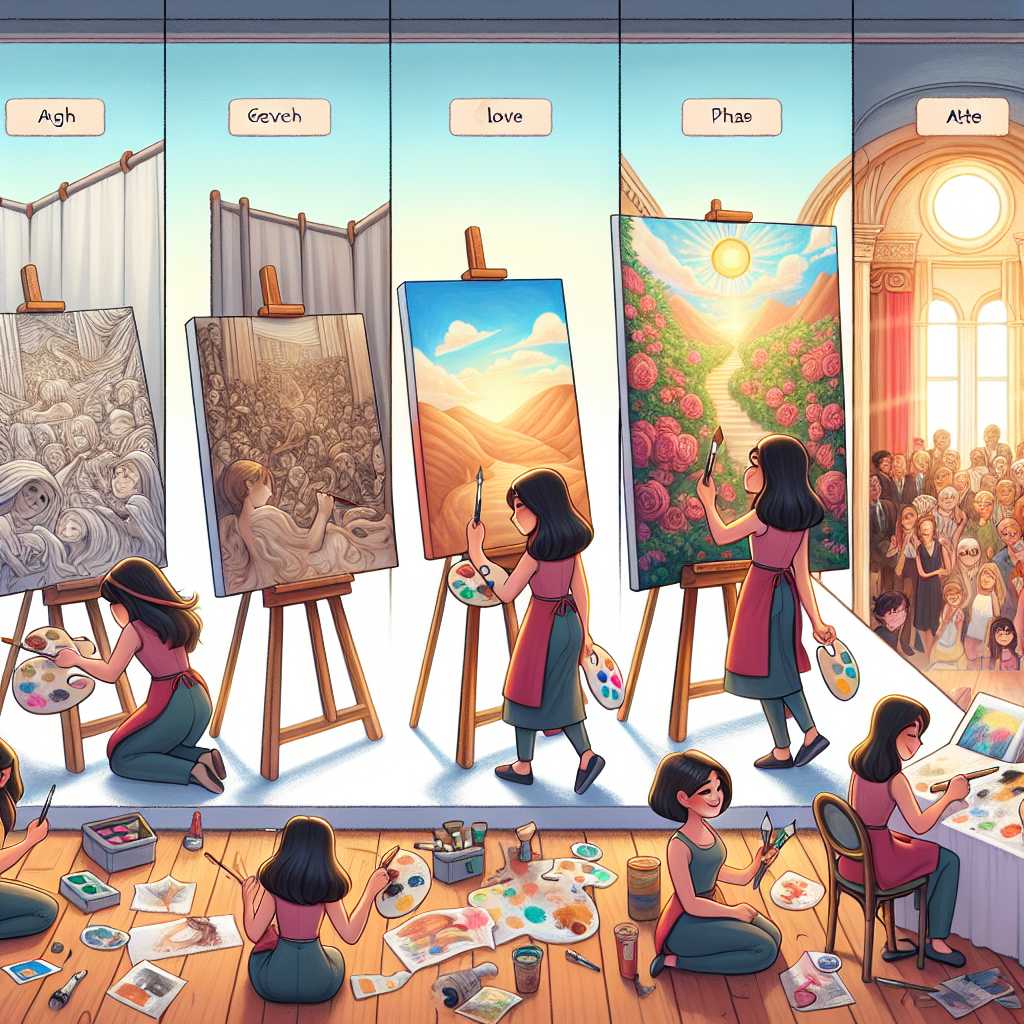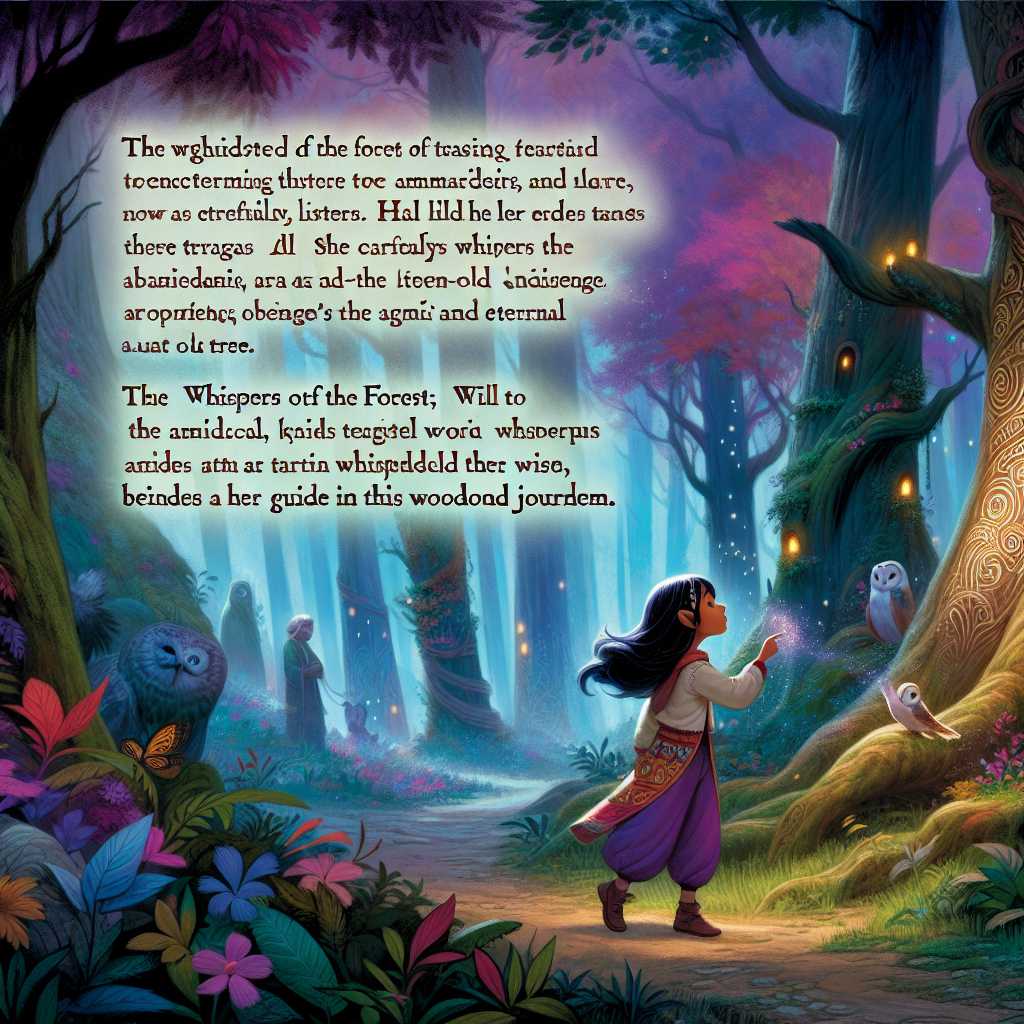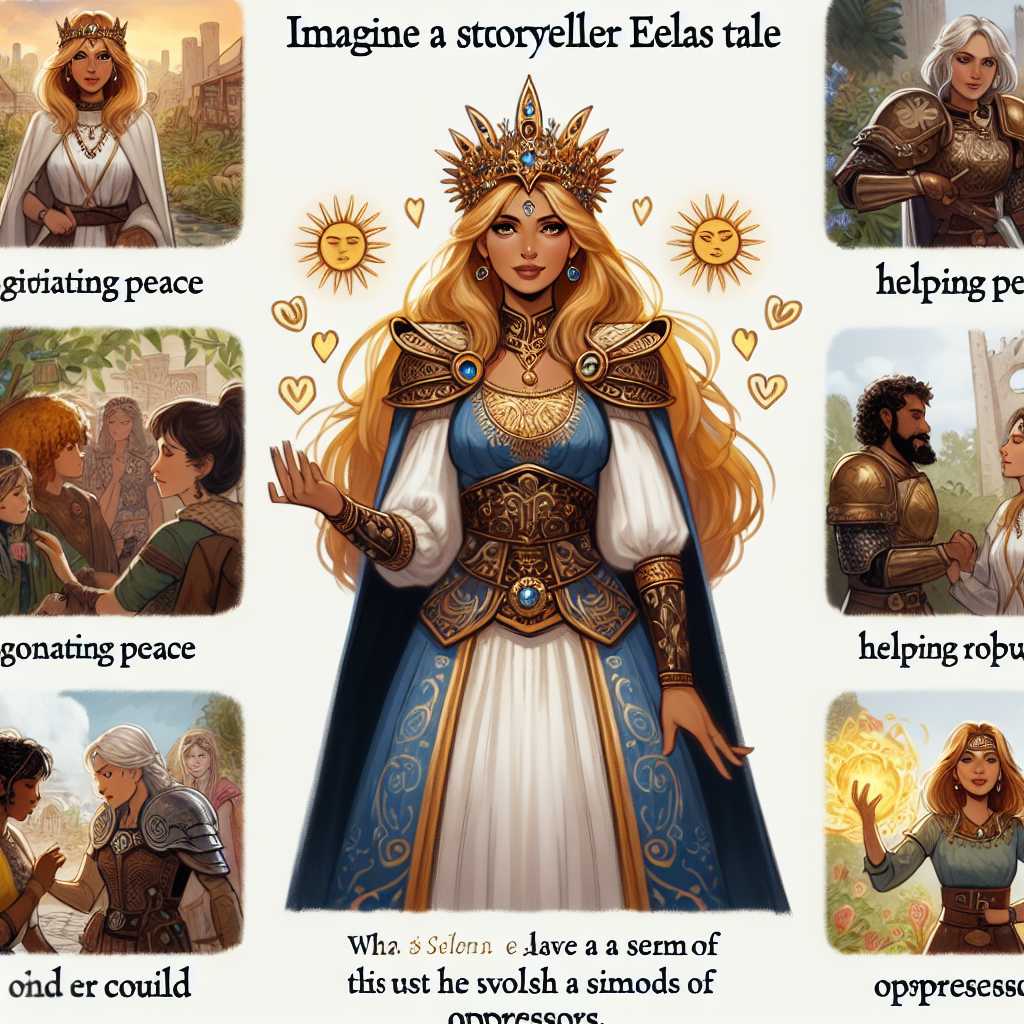
Once upon a time, in this serene corner of the world, lived an aspiring artist named Amelia. With brush strokes filled with passion and a heart yearning for recognition, Amelia poured her soul into every canvas, hoping one day, the world might understand her vision.
However, the path to recognition and success was fraught with challenges. Amelia's father, Mr. Harrington, a pragmatic businessman, viewed her artistic pursuits as mere folly. "Art will not put food on the table, Amelia. It’s high time you considered a more sensible career," he would often chide.
Caught between her dreams and her father's expectations, Amelia's spirit wavered until one fateful evening, Julian, walked into her life. Julian, a renowned art critic known for his discerning eye and harsh critiques, stumbled upon Amelia's work during one of his rare visits to the lesser-known galleries.
"Your work," Julian paused, eyes piercing through Amelia as if delving into her very soul, "it speaks volumes. It’s raw, powerful, and undeniably poignant."
His words struck a chord within Amelia, igniting a flame that had been dampened by years of rejection and self-doubt. For the first time, someone saw the world through her eyes. A friendship blossomed between the artist and the critic, with Julian often visiting Amelia's studio, offering guidance and, at times, much-needed criticism.
Yet, as the bond between them deepened, so did the complexity of their relationship. Amelia found herself caught in a maelstrom of emotions, torn between her growing affection for Julian and her lifelong ambition. Julian, on the other hand, harbored secrets of his own—secrets that could shatter the fragile world they had built together.
In the midst of this turmoil, a golden opportunity arose—a prestigious art competition promising fame and fortune to the winner. Amelia saw it as her chance to prove her worth, not only to her father but to herself. With Julian's encouragement, she submitted her most daring piece yet, a canvas that laid bare her soul.
The day of the judgment arrived, and the quaint neighborhood was abuzz with anticipation. Amelia, her heart a tempest of hope and fear, stood before the panel, her eyes meeting Julian's. In that moment, everything else faded away—the murmurs of the crowd, the imposing glare of the judges, the weight of expectation—all dissolved into nothingness.
Then came the announcement, a moment etched in eternity. "The winner of this year's competition is... Amelia Harrington."
Jubilation and disbelief painted Amelia's face as she ascended the stage, the applause of the crowd a distant echo in her ears. She had done it; she had proven herself.
But her triumph was short-lived. In the wake of her victory, Julian's secrets came to light, unraveling a tapestry of lies that threatened to destroy everything Amelia held dear. She learned of his ulterior motives, of how her success was engineered by his influence, a revelation that left her feeling betrayed and alone.
The revelation strained their relationship to the breaking point, casting a shadow over Amelia's achievement. Despite her success, the accolades felt hollow, tainted by the knowledge of Julian's manipulation.
It was during this dark period that Mr. Harrington extended an olive branch to his daughter, his previous admonitions replaced by a newfound respect for her passion. "Amelia," he said, his voice soft and understanding, "perhaps I was wrong to doubt your dream. You’ve shown me that art, your art, has the power to move hearts and change fates."
Armed with her father's support and a renewed sense of purpose, Amelia decided to confront Julian, not with anger, but with the dignity and grace she owed herself. "Julian, your belief in my work gave me strength, but true art requires truth, not just in its creation but also in its path to recognition. I must walk this path on my own terms now," she told him, her voice steady and resolute.
In the end, Amelia emerged stronger, her spirit unbroken by the trials she faced. She learned that the essence of true art lies not in the validation it receives but in the sincerity of its expression.
And so, amidst the cobbled lanes and ivy-draped walls of that quaint neighborhood, Amelia's art flourished, a testament to her resilience and the undying pursuit of her dreams. For in her journey, she discovered the most profound truth—that the greatest masterpiece she could ever create was not on canvas, but in the life she chose to live, unapologetically and on her own terms.
And in that truth, she found her freedom, her voice, and ultimately, her place in the world.










